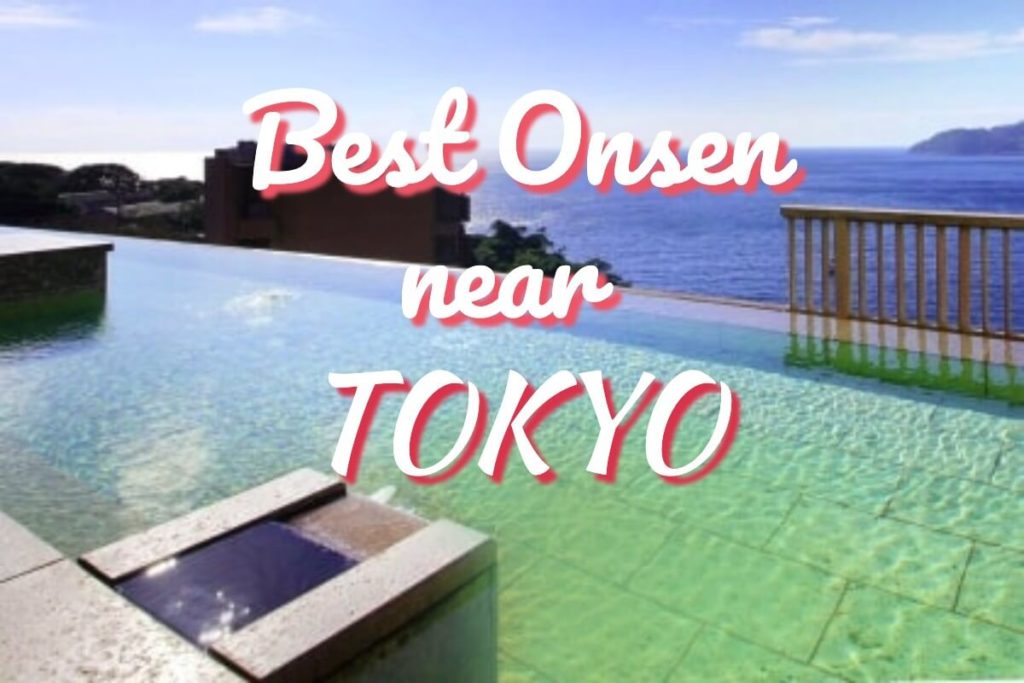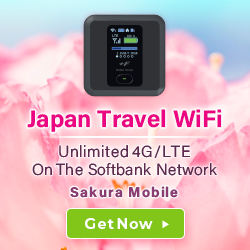- I want to find a hot spring that I can go to on a day trip or weekend trip from Tokyo.
- I want to know which hot springs are easily accessible from Tokyo by train or bus.
- I want to go to an outdoor hot spring near Tokyo where I can enjoy a great view.
In this article, the Sakura Mobile Blog Team has selected 15 of the best hot spring spots near Tokyo.
From open-air baths with spectacular ocean views to ryokan (Japanese inns) where you can experience Japanese traditions to hot spring resorts popular among international travelers, these are all great places to visit at least once.
If you are coming to Tokyo on a vacation, be sure to check them out.
Let’s get started!
Have you booked your SIM card or pocket WiFi for your trip to Japan yet?
In Japan, you’ll want to be connected without missing out on high speed data and internet!
By reserving online before departing, you can
- Lower your rental fees
- Avoid stock shortages at the airport
To learn more about data and WiFi options for your trip, check out our products below.

Hello readers! Sakura Mobile is a SIM & WiFi service provider for international residents and tourists in Japan.
Our global editorial team living in Japan will introduce the charms of the country based on what we have actually experienced and felt.
Table of Contents
Google Map
9 Best Onsen Ryokan/Hotels near Tokyo
First, we will introduce the 9 best onsen ryokan/hotels near Tokyo. You can access all of these places within one to three hours from Tokyo by trains and buses.
It is unbelievable how close these places are to Tokyo. They also come with amazing views.
We will introduce them below.
1. Boso Kamogawa Onsen – ZEKUU – (房総鴨川温泉 是空-ZEKUU-)
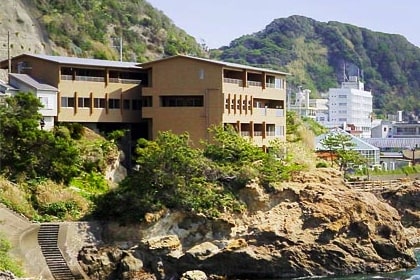
Boso is a Japanese-style hot spring inn located along the coast of Chiba Prefecture, about a two-hour train ride from Tokyo Station. The inn is built on a cliff carved by the rough waves of the Pacific Ocean and offers a stunning ocean view.
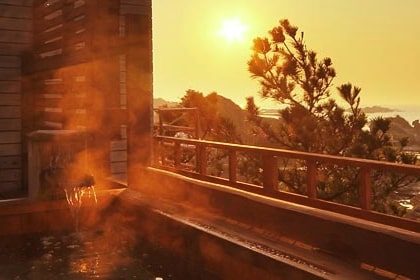
This hot spring inn has a large public bath, and the private outdoor bath is the most attractive feature. The private baths are located on an open-air terrace and offer a panoramic view of the infinitely wide sky and sea. It is truly the ultimate place to relax.
The bath is available from 6:00 am to 9:30 am and from 3:00 pm to 11:00 pm, so you can watch the sun rise or the sun set over the ocean. Spending that kind of time with your loved ones would definitely make a great memory!
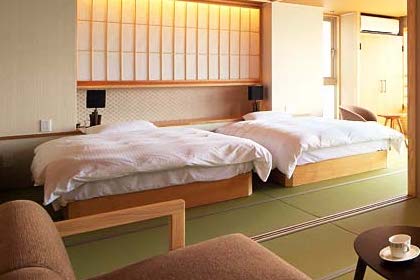
If you are looking for something a little more luxurious, stay in a guest room with an open-air hot spring. When your body gets hot from the hot water, you can sit on the bench right next to it and let the sea breeze cool you down.
At Boso, you can enjoy a course meal that uses a lot of locally caught seafood and freshly grown vegetables. The fresh lobster, abalone, and local fish dishes are especially popular. These are some of the most expensive seafood ingredients in Japan, so be sure to try them.
![]() Click below to play YouTube video↓↓
Click below to play YouTube video↓↓
Information
- Onsen: Boso Kamogawa Onsen – ZEKUU – (房総鴨川温泉 是空-ZEKUU-)
- Price: Starting from around 26,400 JPY/person per night
- Map: Google Maps
- Access: 2 hr. 20 min. by train from Tokyo sta.
- Tattoo: No tattoos allowed
- Visit Official Site
↑ Go back to the table of contents
2. Akazawa Higaeri Onsenkan (赤沢日帰り温泉館)
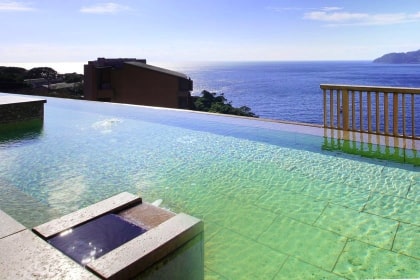
Lying between the Izu Kogen Forest and the Pacific Ocean is the Akazawa Higaeri Onsenkan. It takes around two hours from Tokyo to Akazawa Higaeri Onsenkan by riding the Tokaido-Sanyo Shinkansen.
The Akazawa Higaeri Onsenkan has many kinds of hot springs. The most popular ones are the open-air hot springs that lie at a height of 20 meters and 25 meters above sea level. You can view both the scenic beauty of the Pacific Ocean and the Izu Kogen Forest from these hot springs.
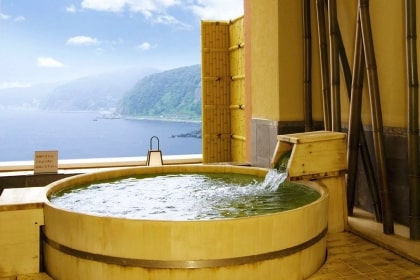
Soaking in the hot spring will make you feel as if you are being embraced by the ocean. If you are someone that likes privacy then we recommend using the open-air hot springs that have a room attached to them. This onsen was created by the famous Japanese cosmetics company named DHC, its main focus being rejuvenating beauty among its customers. The water in the hot springs will help you enhance your beauty and release stress from your mind and body.
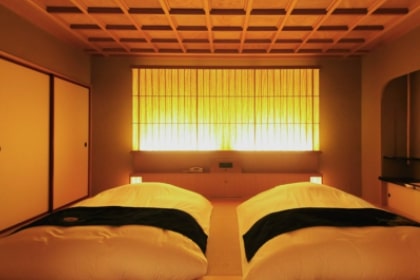
If you want to stay for longer we recommend staying at the Akazawa Geihinkan which is right next to the Akazawa Higaeri Onsenkan. It is a traditional Japanese-style hotel that serves Japanese-style seafood cuisine. The interior of the hotel is a masterpiece of Japanese architecture and all rooms are equipped with an open-air bath that flows with deep seawater. The hotel provides other facilities such as karaoke and a game room.
Information
- Onsen: Akazawa Higaeri Onsenkan (赤沢日帰り温泉館)
- Price: For adults Regular season 1,600 JPY/ person, Peak season 2,000 JPY/ person
- Map: Google Maps
- Access: 2 hr. 10 min. by train from Tokyo sta.
- Tattoo: Tattoos allowed
- Visit Official Site
↑ Go back to the table of contents
3. Hiratsuru (平鶴)
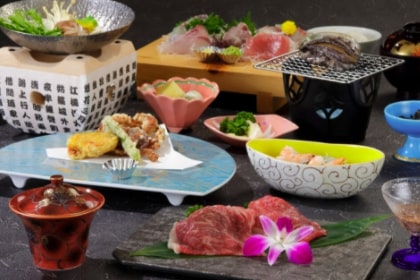
Originally a seafood restaurant, Hiratsuru is now known for its relaxing hot springs with beautiful Pacific Ocean views and its nutritious traditional Japanese cuisine. It is located in Atami City in Shizuoka Prefecture and it takes around one and a half hours to get there using the Tokaido-Sanyo Shinkansen from Tokyo. The meals that you can enjoy at Hiratsuru are made up of ingredients from the ocean that are caught and served fresh.
Hiratsuru has naturally made open-air hot springs near the sea and one is a private onsen named “Shiosai”. These hot springs contain calcium which is known to help people with muscle cramps, joint pain, and other various skin-related issues. The private hot springs are available from 11:00 am to 7:45 pm and it costs 3,500 JPY for one to four people. Amenities are provided in the rooms so it is not necessary to bring anything extra.
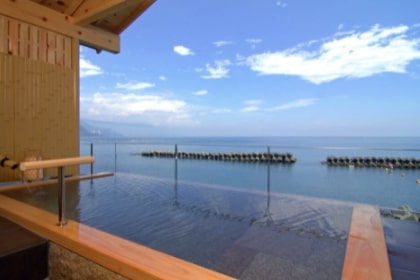
Hiratsuru offers special stay plans which include the hot springs, Japanese cuisine, and tickets to the events happening during the current season. One of the most popular special stay plans at Hiratsuru is the one that involves the Atami City fireworks festival in the summertime.
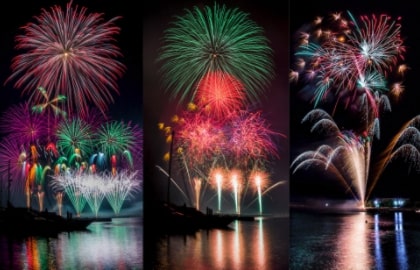
Most local people visit Atami City to see the Atami Castle. Other places you can visit are Izu Skyline, Atami pleasure boat, parks, and museums. If you ever visit Atami City, make sure to visit these places and enjoy the local seafood cuisine.
Information
- Onsen: Hiratsuru (平鶴)
- Price: Starting from around 12,000 JPY/person per night
- Map: Google Maps
- Access: 1 hr. 30 min. by train from Tokyo sta.
- Tattoo: No tattoos in the public onsen, okay in private onsen
- Visit Official Site
↑ Go back to the table of contents
4. Seiryu (清流)
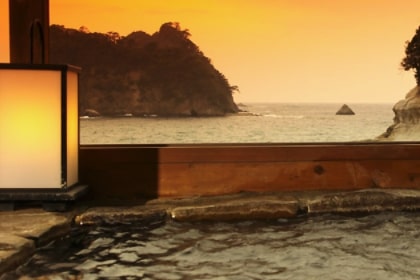
Seiryu, a ryokan in Nishi-Izu in Shizuoka Prefecture has multiple hot springs available with the perfect panoramic oceanic view. Nishi-Izu is known as the Sunset City where you can view Japan’s best sunset. It takes around three hours from Tokyo to reach Nishi-Izu by riding the Tokaido-Sanyo Shinkansen and Izuhakone Tetsudo-Sunzu train.
The hot springs available are one open-air hot spring, two private hot springs named “enman” and “danran”, and a big bath area. Basking in the gorgeous sunset view and the pacific sea breeze from the private open-air hot spring should be on your to-do list if you were to ever visit Shizuoka Prefecture. Since the hot spring is right beside the sea, there is a possibility of small waves coming in the hot spring. Locals enjoy dipping in the hot springs to refresh themselves and usually visit Seiryu for one-day trips.
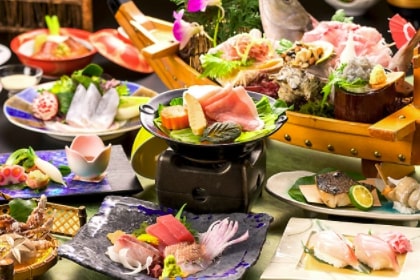
Dishes served by the restaurant at Seiryu are a treat for both your eyes and your taste buds. You can enjoy traditional Japanese cuisine made from popular fresh seafood in that area. The menu s different depending on the season so it is definitely worth trying and experiencing true traditional Japanese food. The restaurant also offers a children’s menu so it is easy for families with younger children to visit.
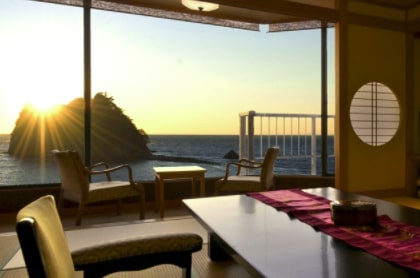
Seiryu has six types of rooms varying in size and price. We recommend the Junior suite Japanese room with an open-air hot spring as it gives you a beautiful view of Doga Island’s natural beauty. You will also enjoy viewing the ocean and the bright sky while dipping in the hot spring in the privacy of your room.
Information
- Onsen: Seiryu (清流)
- Price: Starting from around 6,600 JPY/person per night
- Map: Google Maps
- Access: 2 hr. 40 min. by train from Tokyo sta.
- Tattoo: No tattoos allowed
- Visit Official Site
↑ Go back to the table of contents
5. Shiriyaki Onsen (尻焼温泉)
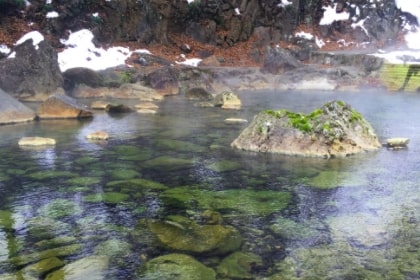
A tucked-away location in a river, this onsen is popular among hot spring lovers who want to relax and reenergize after a long week of hard work. Shiriyaki Onsen is located in Nakanojo-machi in Gunma Prefecture and it takes about three hours to get there by car from Tokyo. The name is derived from the soldier who was dipping in this hot spring to cure their wounds and ended up burning his bottom.
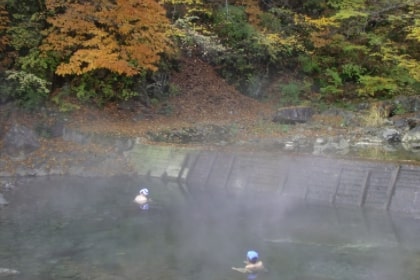
This is an open-air bath that anyone can access and is located in the river itself. Most people visit this hot spring during the summer and autumn seasons but you will find people during other seasons as well. The trees near the river change their colors to the beautiful rustic shades in the autumn so you can enjoy the scenery while in the hot spring. The water is said to help with many skin issues and relieve muscle pain.
Since this is a completely natural open-air hot spring, there is no fee you have to pay to use the hot spring. There are no changing rooms available so please be careful as there is no place nearby to store your clothes. There is a parking lot near the hot spring so you can leave your belongings in the car while you enter the river. You can wear swimsuits to dip in the hot spring but most local people do not wear anything. Near the Shiriyaki Onsen, there are many mountains, lakes, and waterfalls that you can visit as well.
![]() Click below to play YouTube video↓↓
Click below to play YouTube video↓↓
Information
- Onsen: Shiriyaki Onsen (尻焼温泉)
- Price: Free
- Map: Google Maps
- Access: 3 hr. by car from Tokyo
- Tattoo: Tattoos allowed
- Visit Official Site
↑ Go back to the table of contents
6. Tsumagoi Prince Hotel (嬬恋プリンスホテル)
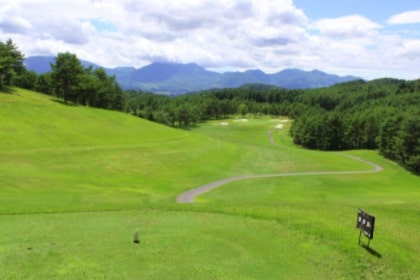
Immensely popular among golf lovers in Japan for the various golf courses it provides alongside the top-class hotel, Tsumagoi Prince Hotel is located in the mountain highlands of Gunma Prefecture. It takes around two and a half hours to reach this hotel by riding the Hokuriku-Shinkansen from Tokyo. This hotel is a perfect retreat for golf lovers and onsen lovers because of its abundance of different golf courses.
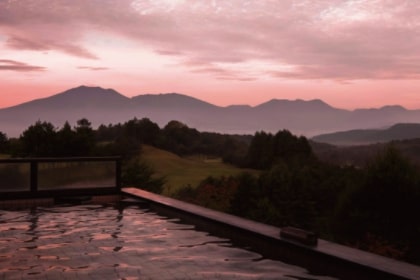
After playing golf, you can enjoy the Motoshirane open-air hot spring located at a height of 1,126 meters above sea level and bask in the scenic view of the city below. From the hot spring, you can also view the beautiful Mt. Asama and Mt. Motoshirane and enjoy the natural breeze from the mountains while dipping in the onsen. The open-air hot spring is also known to have an amazing sunset view and the water also has medicinal properties which help in remedying fatigue.
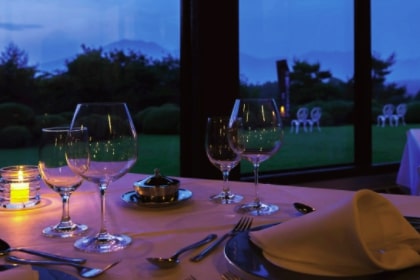
The hotel has two restaurants; one is the clubhouse restaurant that provides with buffet and the other is the hotel restaurant that mainly serves high-class Western food. The clubhouse restaurant serves both Japanese and Western meals and you can view the beautiful golf courses while enjoying your food, while the hotel restaurant is perfect for couples or people who want to relax in the dim romantic lights after playing golf.
Information
- Onsen: Tsumagoi Prince Hotel (嬬恋プリンスホテル)
- Price: Starting from around 5,700 JPY/person per night
- Map: Google Maps
- Access: 3 hr. by train from Tokyo sta.
- Tattoo: No tattoos allowed
- Visit Official Site
↑ Go back to the table of contents
7. Hishino Onsen Tokiwakan (菱野温泉 常盤)
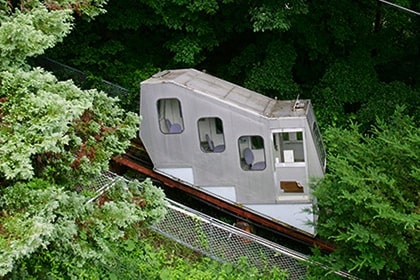
By riding a cable car through the picturesque woods, you will reach the Tokiwakan ryokan located at a height of 1,000 meters above sea level in the woods. This ryokan is popular for the nature around it and you will surely enjoy the cool natural breeze.
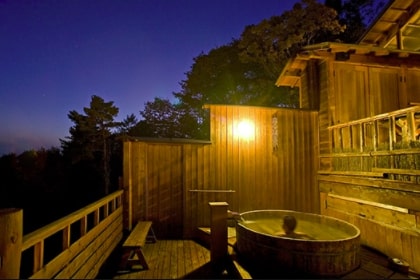
This ryokan has an open-air hot spring and a large bath where you can view the beautiful woods below and around the ryokan. You can see various mountains in the area, and even Mt. Fuji when the skies are clear. The hot spring is open from 6:30 in the morning and closes at 9:00 at night, as there are fewer staff members present to watch over the cable cars.
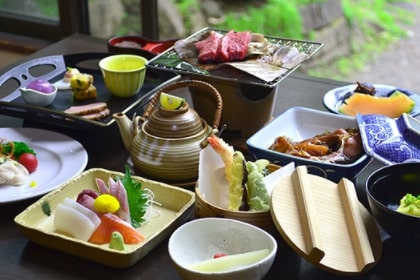
The food served at Tokiwakan is high-class Japanese cuisine made by using the locally-farmed produce. This includes mainly seafood dishes and some meat dishes as well. We recommend that you try the fresh seafood, for example the Saku carp simmered in a secret sauce.
The rooms are a mix of modern Japanese and Western-style, featuring a Japanese ryokan design with a little touch of the Western interior. There are many different types of rooms to choose from, so you can easily find the perfect one for your group size and personal preference.
Near the ryokan, there are many places you can visit such as the Karuizawa Shopping Plaza, Takamine Highlands, Komoro Castle ruins, Ueda Castle, apple picking farms, strawberry picking farms, and Manns Wines Komoro Winery.
Information
- Onsen: Hishino Onsen Tokiwakan (菱野温泉 常盤)
- Price: Starting from around 16,150 JPY/ person per night
- Map: Google Maps
- Access: 2 hr. 20 min. by train from Tokyo sta.
- Tattoo: No tattoos allowed
- Visit Official Site
↑ Go back to the table of contents
8. Modern Toji Only Yu (モダン湯治 おんりーゆー)
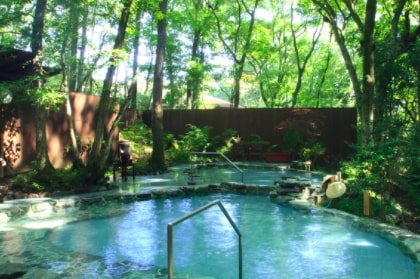
Modern Toji Onryu is a naturally made open-air hot spring located in the woods of Minami Ashigara in Kanagawa Prefecture. It was created more than 15 million years ago and water is naturally alkalic. The hot spring is surrounded by nature and set at a temperature of 38 degrees or 42 degrees celsius. The water is known to have healing properties such as helping your immune system and making your blood flow better. Another benefit of the hot spring is that it helps in healing skin-related issues, stress-related issues, and will help to make you feel more beautiful.
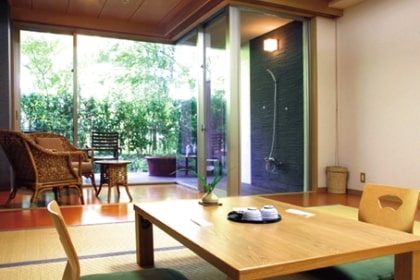
This open-air hot spring has a hotel attached to it which provides various stay plans and meal plans. The food provided is organically made and uses local vegetables. You can get Japanese-style cuisine as well as Japanese and Western hybrid type cuisine as well.
This hotel is popular among guests for overnight trips and offer plans that include meals even if you are just staying for the day. Of course, you can stay for longer periods as well. There are two types of rooms in the hotel: Japanese style and Western-style. The hotel provides amenities such as towels, soaps, razors, shower caps, combs, dryers, yukata, and more.
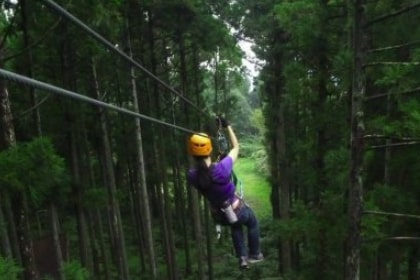
Near the Hotel there are many attractions and one of the popular attraction is the Tobitenku Zip-line. Many people who have an adventurous spirit love to experience the zip-line while enjoying the beautiful nature around them.
Information
- Onsen: Modern Toji Only Yu (モダン湯治 おんりーゆー)
- Price: For adults day time 2,200 JPY, night time 1,540 JPY
- Map: Google Maps
- Access: 1 hr. 50 min. by train from Tokyo sta.
- Tattoo: No tattoos allowed
- Visit Official Site
↑ Go back to the table of contents
9. Maguse Onsen (馬曲温泉)
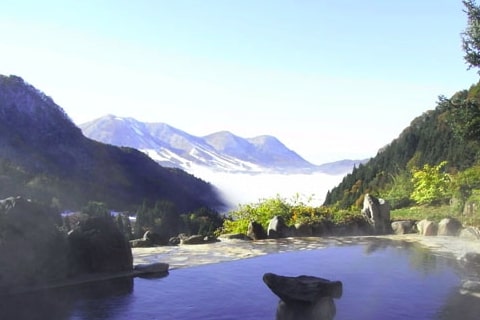
Maguse onsen is one of the best hot springs in eastern Japan, known for the spectacular picturesque winter scenery from the open-air onsen. Although it is mostly famous for its winter landscape, it is known to have amazing views during the other seasons as well.
This hot spring is located at a height of 700 meters and has mountains surrounding it on all sides. Maguse hot spring is naturally made and its water is alkalic. It has healing properties such as the ability to cure muscle pain, joint stiffness, bruises, fatigue, blood circulation, and skin-beautifying effects. It is open from 8:00 am to 8:00 pm and you can enjoy the sunrise and sunset while viewing the beautiful mountains under the sky. It costs 500 JPY for adults and 200 JPY for children.
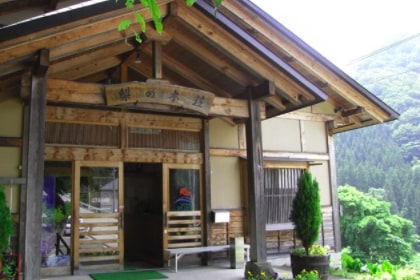
A hotel is attached to this hot spring and is known to have good quality Japanese cuisine and stay plans. Traditional Japanese style cuisine is provided and is most famous for the soba made with water from the nature nearby. The rooms are Japanese styles and have kotatsu, kitchen, coin laundry, and yukata provided. Most people stay in this hotel for a day-trip.
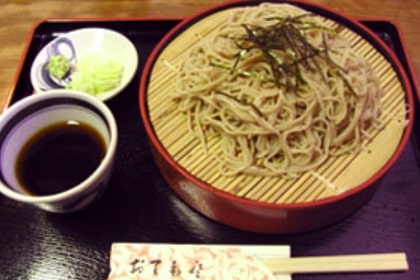
Near the hotel, there are other attractions such as Maguse Onsen Park, Ryuzoji Temple, Townhouse, shrines, and hiking trails. There are other events according to the different seasons.
Information
- Onsen: Maguse Onsen (馬曲温泉)
- Price: Starting from around 6,000 JPY/person per night
- Map: Google Maps
- Access: 3 hr. 30 min. by car from Tokyo
- Tattoo: No tattoos allowed
- Visit Official Site
Have you booked your SIM card or pocket WiFi for your trip to Japan yet?
In Japan, you’ll want to be connected without missing out on high speed data and internet!
By reserving online before departing, you can
- Lower your rental fees
- Avoid stock shortages at the airport
To learn more about data and WiFi options for your trip, check out our products below.
↑ Go back to the table of contents
6 Best Onsen Towns near Tokyo
Next, let’s take a look at some of the famous hot spring resorts near Tokyo.
These are small towns with many ryokans (Japanese style inns) and hotels that have been around since olden times, where large amounts of hot spring water are produced.
There are also many restaurants and souvenir shops for tourists, so just walking around the town is fun.
Be sure to check some of these places out.
1. Ikaho Onsen (伊香保温泉)
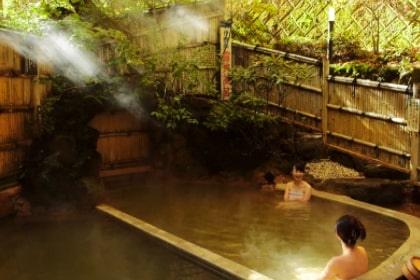
First mentioned in 759CE in the Manyoshu, an ancient Japanese collection of poems, Ikaho is a famous retro onsen town in Gunma Prefecture. This town has many hot springs and they mainly use two types of water namely “Kogane no Yu” and “Shirogane no Yu”. “Kogane no Yu” means golden water and contains sulfate, so it helps in curing muscle pains, joint pains, and fatigue. “Shirogane no Yu” means silver water and it contains silicic acid which replenishes your energy and helps with skin-related issues. These hot springs are popular among women and are known for their beautification purposes.
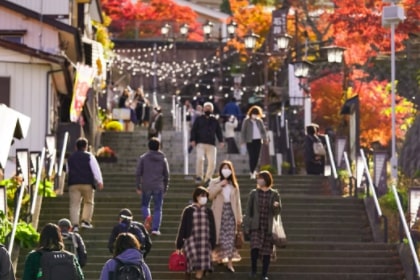
Ikaho’s main attraction is the picturesque stone steps with 365 steps. These stone stairs are the symbol of Ikaho and were made 400 years ago. The reasoning behind having exactly 365 steps is for wishing Ikaho to be crowded and bustling with customers for 365 days a year. Near the stone steps are many popular souvenir shops where you can buy onsen Manju, a Japanese sweet made with rice cakes. You can eat these Manju while dipping in the “Ashiyu” (feet hot spring) to relax your feet and enjoy the vintage Japanese scenery.
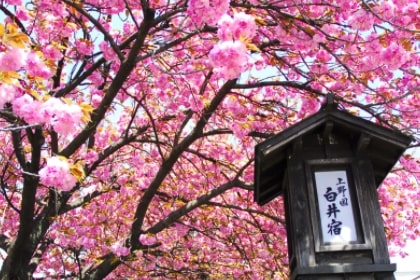
There are many other attractions such as Mt. Haruna, Ikaho Shrine, Haruna Shrine, Kojika Bridge, and many open-air hot-springs. Many events happen in Ikaho throughout all four seasons and not only the locals but also people from other prefectures attend these festivals. Some events are the Shroijuku Double Cherry Blossom Festival, the Haruna Festival & Fireworks, the Kojika Bridge Autumn Illumination, the Ikaho Festival, and the Lake Haruna Illumination festival.
Places to Stay
Information
- Onsen town: Ikaho Onsen, Gunma
- Map: Google Maps
- Access: 2 hr. 10 min. by train from Tokyo sta.
- Visit Official Site
2. Kusatsu Onsen (草津温泉)
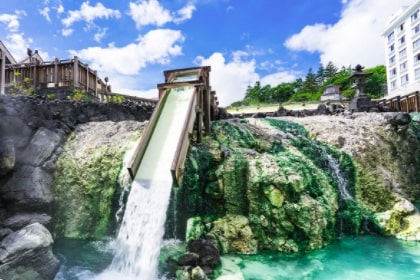
Blessed with various high-quality hot springs with the ability to cure many maladies, Kusatsu is a famous hot spring resort. It is located in the highlands of Gunma Prefecture 1,200 meters above sea level.
The legend of this town goes back to the second-century Yayoi period when a prince named Yamato Takeru from the Yamato clan discovered the hot springs in this region and was mesmerized. It has been a popular onsen town since then and has been mentioned throughout Japanese history in the Kamakura, Sengoku, and Edo periods.
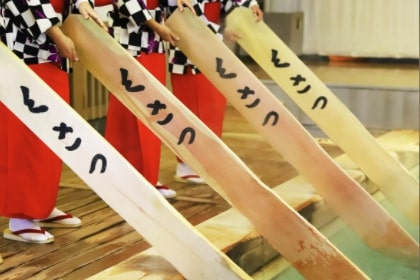
At the center of the town is the “Yubatake”, the spring source which produces the water for the hot springs. The water from Yubatake is known to be mineral-rich and has healing properties. Near the Yubatake, you can watch the Yumomi, a water performance at Netsunoyu. Yumomi is done to cool the hot spring water naturally without diluting the natural hot spring water with cold water. This way the water can retain its natural properties without losing its effectiveness. This performance is done daily so there are many opportunities to see it.
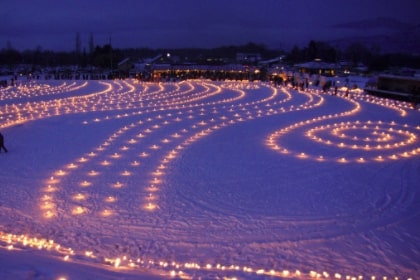
In Kusatsu you will see most people walking in yukata, a Japanese traditional dress; even the town of Kusatsu encourages visitors to wear yukata while walking in the streets. You will definitely feel closer to Japanese culture while wearing yukata and eating various Japanese cuisine like udon, okkirikomi, and yakimanju. There are various seasonal events you should visit like the Kita-Karuizawa Festival of the the Flame, Mihara cherry blossoms, Asama Plateau Rhododendron Festival, Kusatsu Onsen Appreciation Festival, and Yubatake Tree Illumination.
![]() Click below to play YouTube video↓↓
Click below to play YouTube video↓↓
Places to Stay
Information
- Onsen town: Kusatsu Onsen, Gunma
- Map: Google Maps
- Access: 2 hr. 50 min. by train from Tokyo sta.
- Visit Official Site
↑ Go back to the table of contents
3. Hakone Onsen (箱根温泉)
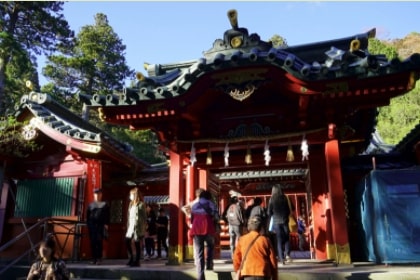
Located near Mt. Fuji and popular among both locals and international travelers as an escapade from Tokyo, Hakone is known as the onsen theme park of Japan. Hakone was first mentioned in the Heian period and is known for the Hakone Shrine located in the area.
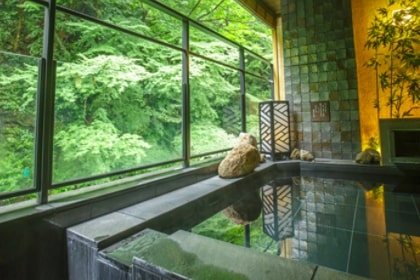
You can dip in various types of hot springs in Hakone, each with its own appeal and deep history. Some of Hakone’s popular hot springs are either alkaline-based or contain calcium-sulfate. You will definitely enjoy the medicinal qualities of the rich hot springs and get beautified from the waters. You can find various onsen with different kinds of scenic views like mountains and lake views.
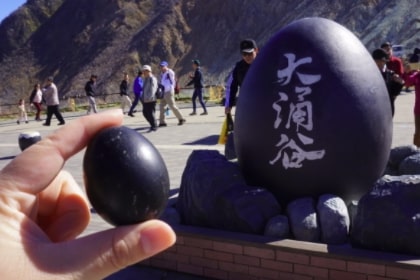
Most people visit Hakone to eat the black eggs found at Owakudani, a volcanic valley with sulfur vents. These black eggs are slowly boiled in sulphuric hot springs and are said to increase your lifespan by seven more years if you eat them. Some other attractions in Hakone to enjoy are the Open Air Museum, Owakudani, Lake Ashinoko, Hakone Shrine, Odawara Castle, Hakone Ropeway, etc. There are also many festivals according to the different seasons. If you want to enjoy true Japanese culture, then Hakone should definitely be a place on your bucket list.
Places to Stay
Information
- Onsen town: Hakone Onsen, Kanagawa
- Map: Google Maps
- Access: 1 hr. by train from Tokyo sta.
- Visit Official Site
Related article
↑ Go back to the table of contents
4. Kinugawa Onsen (鬼怒川温泉)
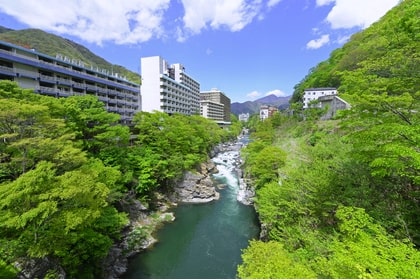
Kinugawa which literally translates to “Angry Demon River,” is another famous hot spring in Japan, located in Tochigi Prefecture. A river flows through the town, and there are several modern hotels and traditional ryokans lined on the riverbank. It was built to be a tourist spot in the 1970s and has been popular since then among the locals and international travelers. Other famous attractions in the area include Tobu World Square and Nikko Edomura theme park.
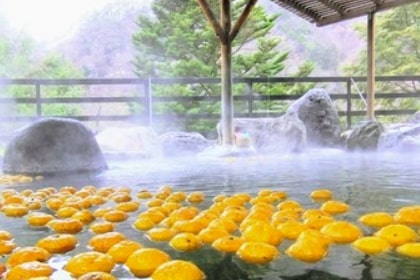
Made from two hot springs on the banks of the Kinugawa river, the rich water has attracted people from all over Japan to take a dip in the hot springs. Most people visit the Kinugawa onsen for an overnight trip where they enjoy the onsen and the scenery to release their pent-up fatigue.
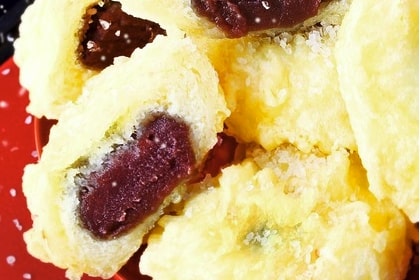
The local cuisine such as the locally produced Kaiseki Ryori, Manju, and freshwater fish is cherished by the travelers. People usually eat Manju while dipping in the hot spring to enjoy the sweetness and relax. The dishes made from fresh seafood from the river are a must-eat for people visiting Kinugawa. We recommend visiting Kinugawa to travelers wanting to enjoy a small getaway from their stressful lives.
Places to Stay
Information
- Onsen town: Kinugawa Onsen, Tochigi
- Map: Google Maps
- Access: 2 hr. 10 min. by train from Tokyo sta.
- Visit Official Site
Related article
↑ Go back to the table of contents
5. Atami Onsen (熱海温泉)
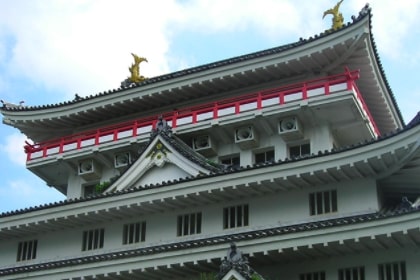
Atami has a long history of being a hot spring resort town frequented by prevalent historical figures since the Nara period around 1300 years ago. Some of the recognizable people are Minamoto no Yoritomo and Hojo Masako, familiar to those who have knowledge about Japanese history. It is still immensely popular among the locals and around 6 million Japanese tourists visit each year. Atami has all the natural attractions with a stunning view like the ocean, hot springs, and mountains. The most well-known attraction in Atami is the Atami Castle which was built in 1959. You can also dress up in traditional Japanese garments like Kimono from the Edo Period.
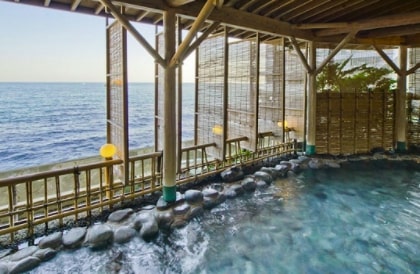
Some famous onsen in Atami are Atami Onsen, Izusan Onsen, Ajiro Onsen, Izu-Taga Onsen. Most onsen have medicinal properties and are great for replenishing your energy and taking away your fatigue. Most locals visit hotels and ryokans in Atami to re-energize themselves during their overnight trip visits. Atami is located near the Pacific Ocean so you can enjoy the crisp sea breeze while dipping in the hot springs. You can also view Mt. Fuji from some hot springs when the skies are clear.
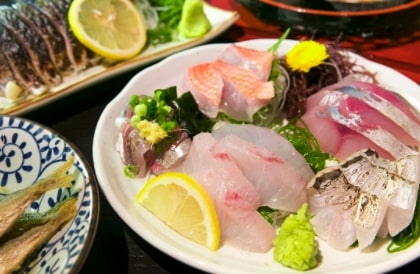
Since Atami is located on the seaside, most restaurants use fresh seafood for their dishes. You must try out the sushi, dried fish, fish broiled in broth, and other seafood cuisine as well. Atami is also known for its traditional Japanese sweets like Manju which you can enjoy after dipping in the hot springs. During the 19th century, Atami became popular among international travelers wanting to learn Japanese culture, so in order to accommodate them, Japanese Western cuisine was developed. You can enjoy these Japanese Western dishes in Atami as well.
![]() Click below to play YouTube video↓↓
Click below to play YouTube video↓↓
Places to Stay
Information
- Onsen town: Atami Onsen, Shizuoka
- Map: Google Maps
- Access: 45 min. by train from Tokyo sta.
- Visit Official Site
Related article
↑ Go back to the table of contents
6. Nasu Onsen (那須温泉)
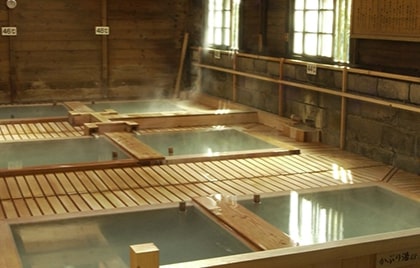
Onsen in Nasu around Mt. Nasudake were first found during the Nara period around 1300 years ago. In the area there are other dormant volcanic mountains and that area is known as the famous Nasu Highlands. Most people visit Nasu for overnight trips and after hiking mountains, they go to the hot springs to re-energize themselves. These hot springs are known for their restorative properties and are loved by people all over Japan. You can enjoy the scenic mountain view while soaking in the onsen.
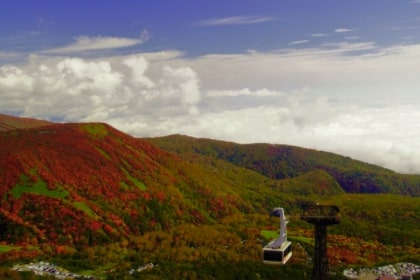
Nasu has rich natural beauty with forests, lakes, and waterfalls. We recommend visiting Nasu if you are interested in nature photography. Tourists who enjoy nature photography are known to frequently visit Nasu because of the numerous scenic views to photograph and share with your friends. Nasu has an annual photo contest that anyone can participate in, and you can even get prizes.
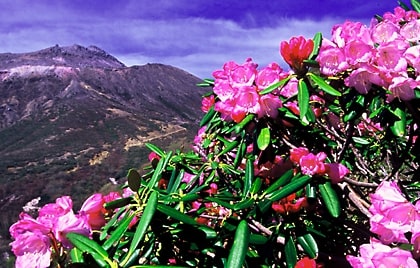
The rustic autumn shades that you can find on the trees in the fall are popular, making it the peak season for local tourists and international travelers visiting Nasu. Other popular attractions are Nasu Ropeway, Murder Stone, Heisei no Mori, Tsutsuji Suspension Bridge, Azalea Fields. From the Nasu Ropeway, you can view the beautiful forests which change color in different seasons. If you ever visit Tochigi Prefecture make sure to visit the places mentioned above and enjoy the natural hot springs.
Places to Stay
Information
- Onsen town: Nasu Onsen, Tochigi
- Map: Google Maps
- Access: 2 hr. 10 min. by train from Tokyo sta.
- Visit Official Site
↑ Go back to the table of contents
Conclusion
Did you find any ryokan/hotel or onsen town enticing enough to visit?
All these places mentioned above are fantastic to visit at least once, from open-air baths with amazing ocean views to ryokan (Japanese inns) where you can experience Japanese culture, to hot spring resorts popular with international travelers.
Many Japanese people love to dip in hot springs to relieve the stress from their day-to-day lives. Onsen have always been popular among international travelers who want to experience the full package of Japanese culture.
If you are visiting Tokyo for a holiday, be sure to pay them a visit.
Have you booked your SIM card or pocket WiFi for your trip to Japan yet?
In Japan, you’ll want to be connected without missing out on high speed data and internet!
By reserving online before departing, you can
- Lower your rental fees
- Avoid stock shortages at the airport
To learn more about data and WiFi options for your trip, check out our products below.

